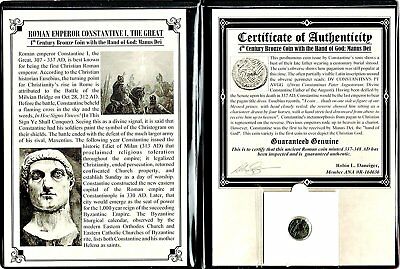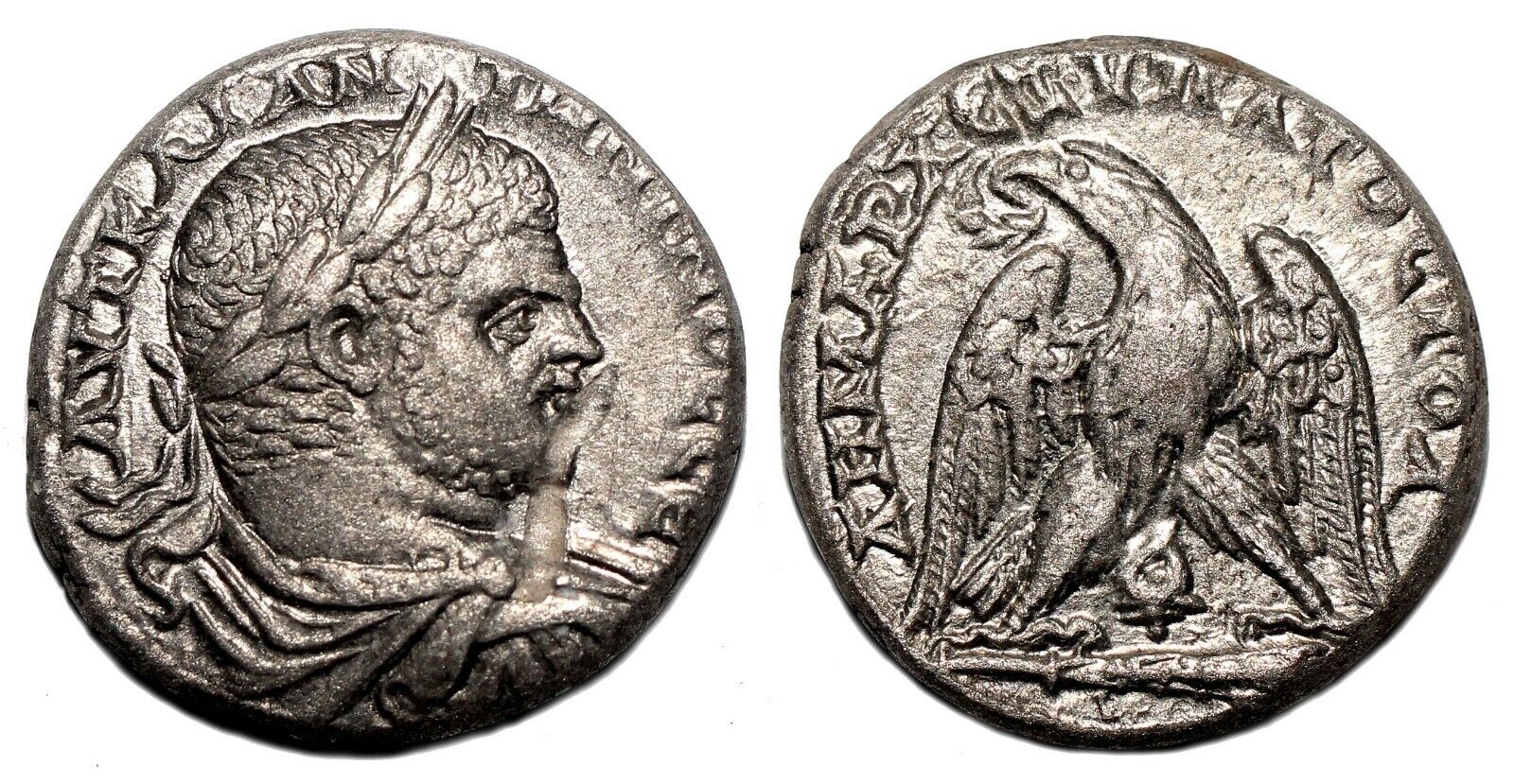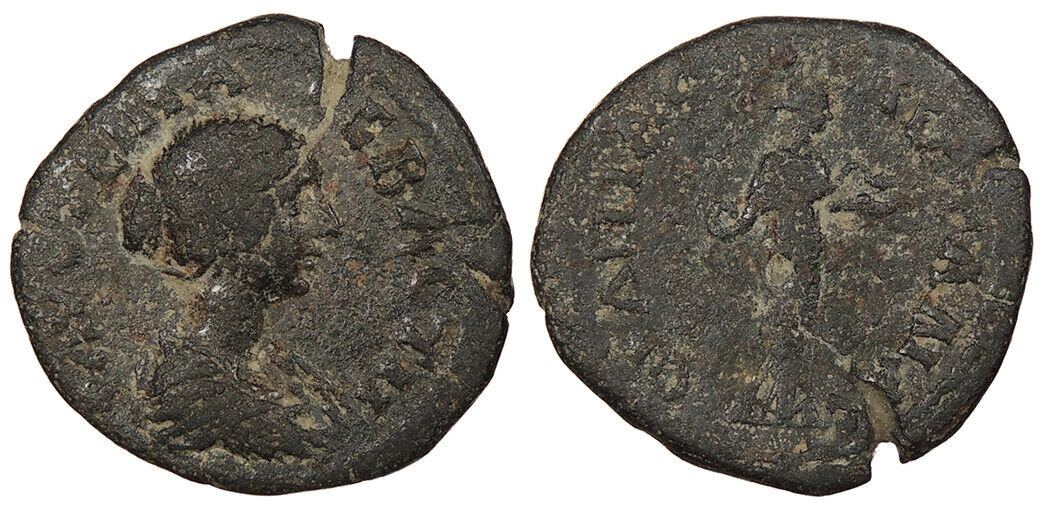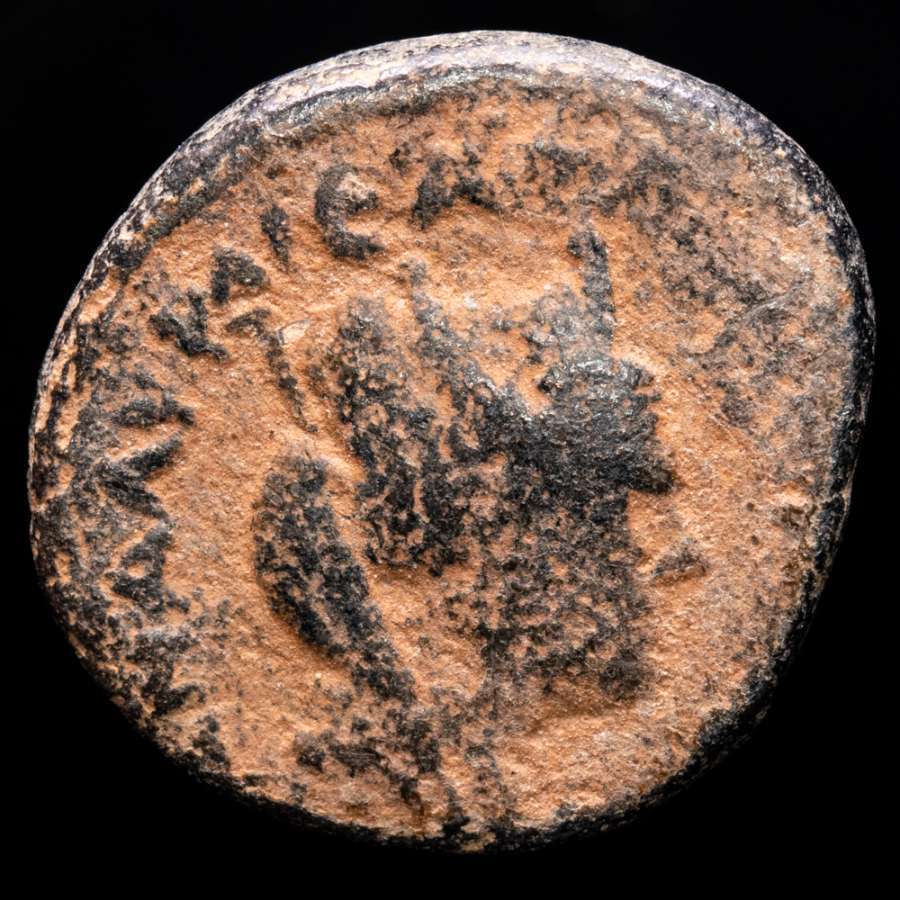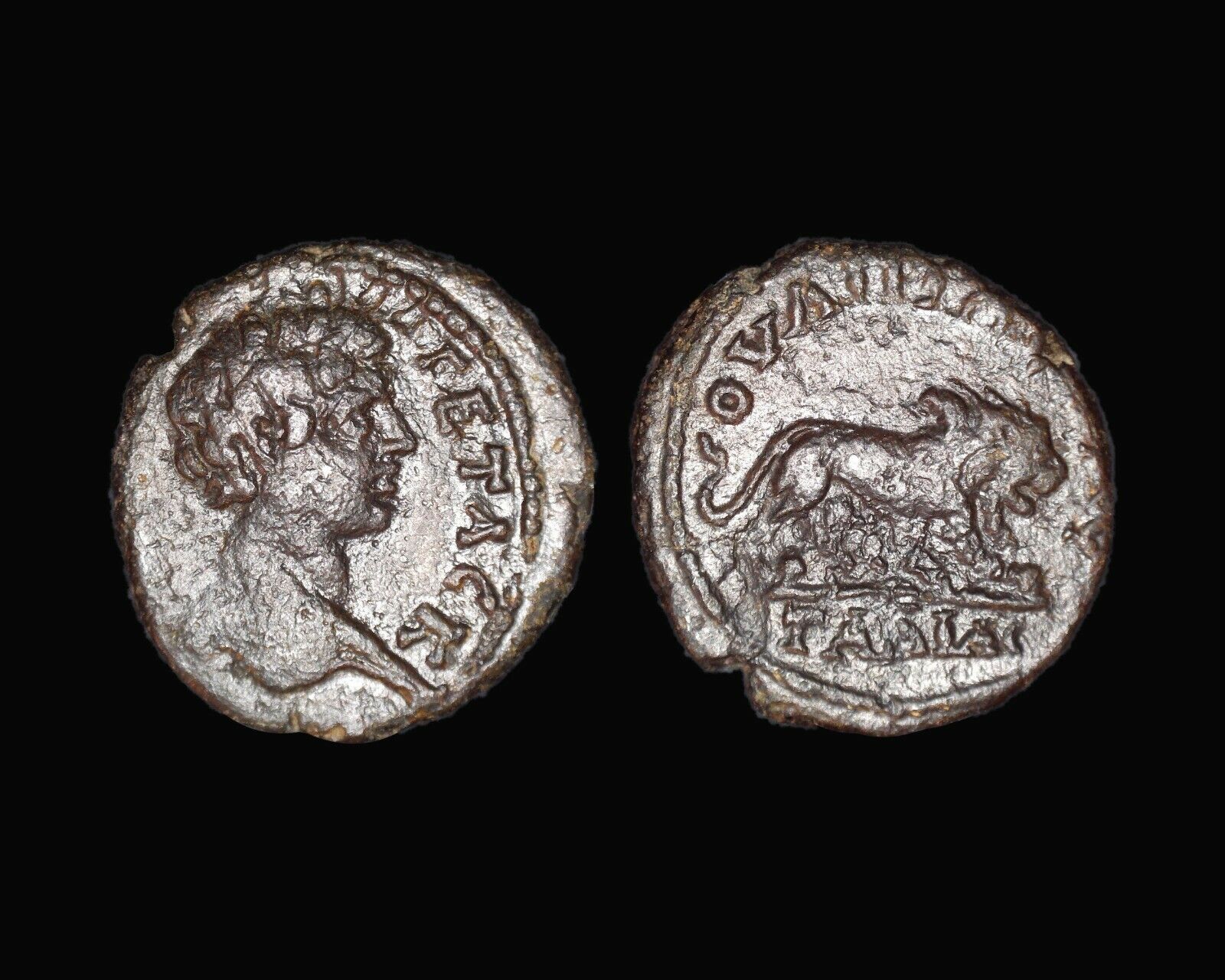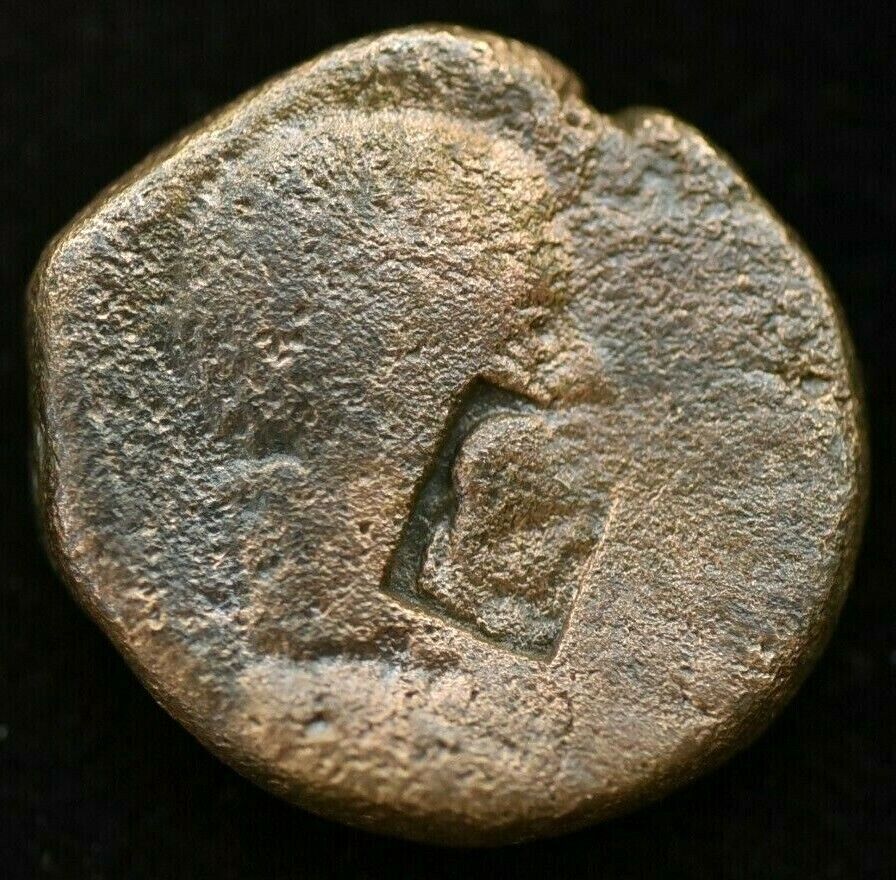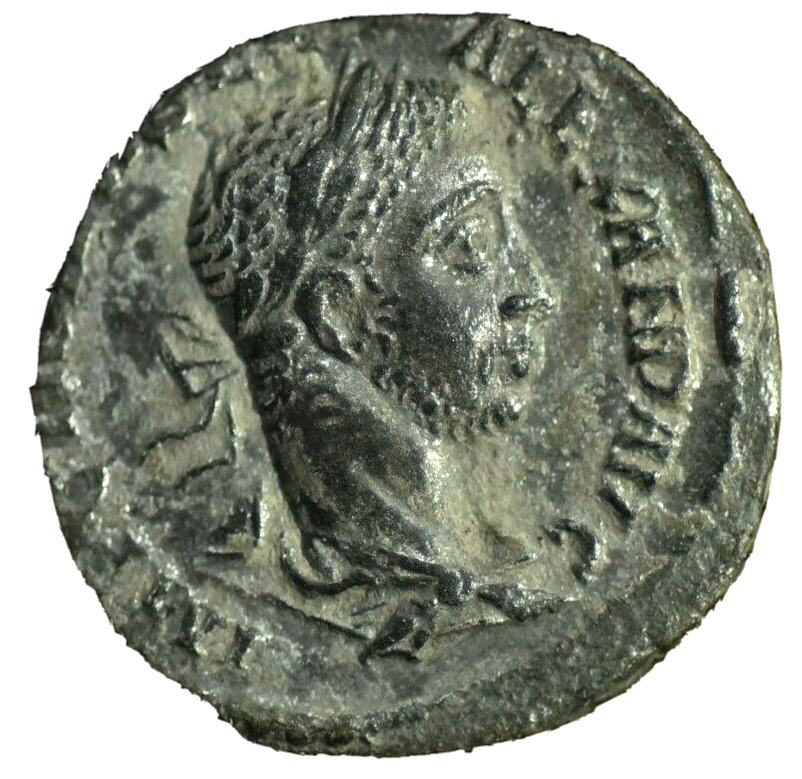-40%
PHILIP I 244AD ATLAS Holds Globe Pillars of Hercules Labor Roman Coin i44109
$ 590.72
- Description
- Size Guide
Description
Item:i44109
Authentic Ancient Coin of:
Philip I
'the Arab' -
Roman Emperor
: 244-249 A.D. -
Bronze 30mm (9.51 grams) of Roman provincial mint
Laureate, draped and cuirassed bust right.
ЄΠΙCΤΠΟV CЄΡΟΤΟCKV ΜΑΤΩΝ, Atlas standing facing holding globe between two Pillars of Hercules, with five column structure below.
* Numismatic Note: This may be a truly unique type and one of a kind coin that features Atlas, and is related to the Labor of Hercules.. I have not come across any types of coins that featured Atlas ever at any of the major coin auctions. In some versions of the myth, Hercules buiilt two great pillars known as the Pillars of Hercules to hold up the sky and liberate Atlas. This may be the version depicted on this coin.
You are bidding on the exact item pictured, provided with a Certificate of Authenticity and Lifetime Guarantee of Authenticity.
In
Greek mythology
,
Atlas
(
/
s
æ
t
l
ə
ˈ
/
;
Ancient Greek
:
Ἄτλας
) was the primordial
Titan
who held up the
celestial spheres
. He is also the titan of astronomy and navigation. Although associated with various places, he became commonly identified with the
Atlas Mountains
in northwest Africa (Modern-day Morocco, Algeria and Tunisia). Atlas was the son of the Titan
Iapetus
and the
Oceanid
Asia
or
Clymene
.
In contexts where a Titan and a Titaness are assigned each of the seven planetary powers, Atlas is paired with
Phoebe
and governs the
moon
.
Hyginus
emphasises the primordial nature of Atlas by making him the son of
Aether
and
Gaia
.
The first part of the term
Atlantic Ocean
refers to "Sea of Atlas", the term
Atlantis
refers to "island of Atlas".
Etymology
Sculpture of Atlas, Praza do Toural,
Santiago de Compostela
.
The
etymology
of the name
Atlas
is uncertain.
Virgil
took pleasure in translating etymologies of Greek names by combining them with adjectives that explained them: for Atlas his adjective is
durus
, "hard, enduring", which suggested to George Doig that Virgil was aware of the Greek τλῆναι "to endure"; Doig offers the further possibility that Virgil was aware of
Strabo
's remark that the native North African name for this mountain was
Douris
. Since the Atlas mountains rise in the region inhabited by
Berbers
, it has been suggested that the name might be taken from one of the
Berber
, specifically
ádrār
'mountain'.
Traditionally historical linguists etymologize the Ancient Greek word Ἄτλας (
genitive
: Ἄτλαντος) as comprised from copulative α- and the
Proto-Indo-European
root
*telh₂-
'to uphold, support' (whence also τλῆναι), and which was later reshaped to an nt-stem. However,
Robert Beekes
argues that it cannot be expected that this ancient Titan carries an Indo-European name, and that we're rather dealing with the word of
Pre-Greek
origin which often end in
-ant
.
Punishment
Atlas and his brother
Menoetius
sided with the Titans in their war against the
Olympians
, the
Titanomachy
. When the Titans were defeated, many of them (including Menoetius) were confined to
Tartarus
, but
Zeus
condemned Atlas to stand at the western edge of
Gaia (the Earth)
and hold up
Uranus
on his shoulders, to prevent the two from resuming their primordial embrace. Thus, he was
Atlas Telamon
, "enduring Atlas," and became a doublet of
Coeus
, the embodiment of the celestial axis around which the heavens revolve.
A common misconception today is that Atlas was forced to hold the Earth on his shoulders, but Classical art shows Atlas holding the
celestial spheres
, not a
globe
; the solidity of the marble globe born by the renowned
Farnese Atlas
may have aided the conflation, reinforced in the 16th century by the developing usage of
atlas
to describe a corpus of terrestrial maps.
Greco-Buddhist
(1-200
BC
) Atlas, supporting a Buddhist monument,
Hadda
, Afghanistan.
Variations
In a late story, a giant named Atlas tried to drive a wandering
Perseus
from the place where the
Atlas mountains
now stand. In
Ovid
's telling, Perseus revealed
Medusa
's head, turning Atlas to stone (those very mountains) when he tried to drive him away, as a prophecy said that a son of Zeus would steal the golden apples.
[
further
explanation needed
]
As is not uncommon in myth, this account cannot be reconciled with the far more common stories of Atlas' dealings with
Heracles
, who was Perseus' great-grandson.
According to
Plato
, the first king of
Atlantis
was also named
Atlas
, but that Atlas was a son of
Poseidon
and the mortal woman Cleito. A
euhemerist
origin for Atlas was as a legendary Atlas, king of Mauretania, an expert astronomer.
Encounter with Heracles
One of the
Twelve Labors
of the hero
Heracles
was to fetch some of the golden apples which grow in
Hera
's garden, tended by Atlas' daughters, the Hesperides, and guarded by the dragon
Ladon
. Heracles went to Atlas and offered to hold up the heavens while Atlas got the apples from his daughters.
Upon his return with the apples, however, Atlas attempted to trick Heracles into carrying the sky permanently by offering to deliver the apples himself, as anyone who purposely took the burden must carry it forever, or until someone else took it away. Heracles, suspecting Atlas did not intend to return, pretended to agree to Atlas' offer, asking only that Atlas take the sky again for a few minutes so Heracles could rearrange his cloak as padding on his shoulders. When Atlas set down the apples and took the heavens upon his shoulders again, Heracles took the apples and ran away.
In some versions, Heracles instead built the two great
Pillars of Hercules
to hold the sky away from the earth, liberating Atlas much as he liberated
Prometheus
.
Etruscan Aril
The identifying name
Aril
is inscribed on two 5th-century Etruscan bronze items, a mirror from
Vulci
and a ring from an unknown site. Both objects depict the encounter with Atlas of
Hercle
, the Etruscan
Heracles
, identified by the inscription; they represent rare instances where a figure from
Greek mythology
is imported into
Etruscan mythology
, but the name is not. The Etruscan name
aril
is etymologically independent.
Children
Lee Lawrie
's colossal bronze
Atlas
,
Rockefeller Center
, New York.
Sources describe Atlas as the father, by different goddesses, of numerous children, mostly daughters. Some of these are assigned conflicting or overlapping identities or parentage in different sources.
By
Hesperius
:
the
Hesperides
By
Pleione
(or
Aethra
):
the
Hyades
a son,
Hyas
the
Pleiades
By one or more unspecified goddesses:
Calypso
Dione
Maera
Cultural influence
Main article:
Atlas (disambiguation)
Atlas supports the terrestrial globe on a building in
Collins Street, Melbourne
,
Australia
.
Nautilus Cup
. This drinking vessel, for court feasts, depicts Atlas holding the shell on his back. The Walters Art Museum.
Atlas' best-known cultural association is in
cartography
. The first publisher to associate the Titan Atlas with a group of maps was the print-seller Antonio Lafreri, on the engraved title-page he applied to his
ad hoc
assemblages of maps,
Tavole Moderne Di Geografia De La Maggior Parte Del Mondo Di Diversi Autori
(1572); however, he did not use the word "atlas" in the title of his work, an innovation of
Gerardus Mercator
, who dedicated his "atlas" specifically "to honour the Titan, Atlas, King of
Mauretania
, a learned philosopher, mathematician, and astronomer"; he actually depicted the
astronomer king
.
See also
Atlas (architecture)
Farnese Atlas
Upelluri
Marcus Julius Philippus
or
Philippus I Arabs
(c. 204–249), known in
English
as
Philip the Arab
or formerly (prior to World War II) in English as
Philip the Arabian
, was a
Roman Emperor
from 244 to 249.
//
Little is known about Philip's early life and political career. He was born in
Shahba
, about 55 miles southeast of
Damascus
, in the
Roman province
of
Syria
. Philip has the nickname "the Arab" because he had family who had originated in the
Arabian peninsula
, believed to be distant descendants of the prestigious Baleed family of
Aleppo
. Philip was the son of a Julius Marinus, a local Roman citizen, possibly of some importance. Many historians
[1]
[2]
[3]
agree that he was of Arab descent who gained
Roman citizenship
through his father, a man of considerable influence. Many citizens from the provinces took Roman names upon acquiring citizenship. This makes tracing his Arabic blood line difficult. However, it is documented that Rome used the
Ghassan
tribe from the
Azd
of
Yemen
as vassals to keep the neighboring northern Arabs in check.
The name of Philip's mother is unknown, but sources refer to a brother,
Gaius Julius Priscus
, a member of the
Praetorian guard
under
Gordian III
(238–244). In 234, Philip married
Marcia Otacilia Severa
, daughter of a Roman Governor. They had two children: a son named Marcus Julius Philippus Severus (
Philippus II
) in 238 and according to numismatic evidence they had a daughter called Julia Severa or Severina, whom the ancient Roman sources don't mention.
Philip became a member of the
Pretorian Guard
during the reign of the emperor
Alexander Severus
, who was a Syrian. In ancient Rome the Pretorian Guard was closely associated with the emperor, serving among other things as the emperor's bodyguard.
Political career
In 243, during
Gordian III
's campaign against
Shapur I
of Persia, the
Praetorian prefect
Timesitheus
died under unclear circumstances. At the suggestion of his brother Priscus, Philip became the new Praetorian prefect, with the intention that the two brothers would control the young Emperor and rule the Roman world as unofficial regents. Following a military defeat, Gordian III died in 244 under circumstances that are still debated. While some claim that Philip conspired in his murder, other accounts (including one coming from the Persian point of view) state that Gordian died in battle. Whatever the case, Philip assumed the purple following Gordian's death. According to Edward Gibbon:
His rise from so obscure a station to the first dignities of the empire seems to prove that he was a bold and able leader. But his boldness prompted him to aspire to the throne, and his abilities were employed to supplant, not to serve, his indulgent master.
Philip was not willing to repeat the mistakes of previous claimants, and was aware that he had to return to
Rome
in order to secure his position with the
senate
. He thus travelled west, after concluding a peace treaty with Shapur I, and left his brother Priscus as extraordinary ruler of the Eastern provinces. In Rome he was confirmed
Augustus
, and nominated his young son
Caesar
and heir.
Philip's rule started with yet another
Germanic
incursion on the provinces of
Pannonia
and the
Goths
invaded
Moesia
(modern-day
Serbia
and
Bulgaria
) in the
Danube
frontier. They were finally defeated in the year 248, but the
legions
were not satisfied with the result, probably due to a low share of the plunder, if any. Rebellion soon arose and
Tiberius Claudius Pacatianus
was proclaimed emperor by the troops. The uprising was crushed and Philip nominated
Gaius Messius Quintus Decius
as governor of the province. Future events would prove this to be a mistake. Pacatianus' revolt was not the only threat to his rule: in the East,
Marcus Jotapianus
led another uprising in response to the oppressive rule of
Priscus
and the excessive taxation of the Eastern provinces. Two other usurpers,
Marcus Silbannacus
and
Sponsianus
, are reported to have started rebellions without much success.
In April
A.D.
248 (April 1000
A.U.C.
), Philip had the honour of leading the celebrations of the one thousandth birthday of Rome, which according to tradition was
founded
in 753 BC by
Romulus
. He combined the anniversary with the celebration of Rome's alleged tenth
saeculum
. According to contemporary accounts, the festivities were magnificent and included spectacular games,
ludi saeculares
, and theatrical presentations throughout the city. In the coliseum, more than 1,000 gladiators were killed along with hundreds of exotic animals including hippos, leopards, lions, giraffes, and one rhinoceros. The events were also celebrated in literature, with several publications, including
Asinius Quadratus
's
History of a Thousand Years
, specially prepared for the anniversary.
Despite the festive atmosphere, discontent in the legions was growing.
Decius
(249–251) was proclaimed Emperor by the Danubian armies in the spring of 249 and immediately marched to Rome. Philip's army met the usurper near modern
Verona
that summer. Decius won the battle and Philip was killed sometime in September 249, either in the fighting or assassinated by his own soldiers who were eager to please the new ruler. Philip's eleven-year-old son and heir may have been killed with his father and Priscus disappeared without a trace.
Religious beliefs
Further information:
Philip the Arab and Christianity
Some later traditions, first mentioned in the historian
Eusebius
in his
Ecclesiastical History
, held that Philip was the first
Christian
Roman emperor. This tradition seems to be based on reports in Eusebius that Philip allegedly had once entered a Christian service on Easter, after having been required by a bishop to confess his sins. Later versions located this event in Antioch.
However, historians generally identify the later Emperor Constantine, baptised on his deathbed, as the first Christian emperor, and generally describe Philip's adherence to Christianity as dubious, because non-Christian writers do not mention the fact, and because throughout his reign, Philip to all appearances (coinage, etc.) continued to follow the
state religion
. Critics ascribe Eusebius' claim as probably due to the tolerance Philip showed towards Christians.
Saint Quirinus of Rome
was, according to a legendary account, the son of Philip the Arab.
Frequently Asked Questions
How long until my order is shipped?
Depending on the volume of sales, it may take up to 5 business days for shipment of your order after the receipt of payment.
How will I know when the order was shipped?
After your order has shipped, you will be left positive feedback, and that date should be used as a basis of estimating an arrival date.
After you shipped the order, how long will the mail take?
USPS First Class mail takes about 3-5 business days to arrive in the U.S., international shipping times cannot be estimated as they vary from country to country. I am not responsible for any USPS delivery delays, especially for an international package.
What is a certificate of authenticity and what guarantees do you give that the item is authentic?
Each of the items sold here, is provided with a Certificate of Authenticity, and a Lifetime Guarantee of Authenticity, issued by a world-renowned numismatic and antique expert that has identified over 10000 ancient coins and has provided them with the same guarantee. You will be quite happy with what you get with the COA; a professional presentation of the coin, with all of the relevant information and a picture of the coin you saw in the listing.
Compared to other certification companies, the certificate of authenticity is a -50 value. So buy a coin today and own a piece of history, guaranteed.
Is there a money back guarantee?
I offer a 30 day unconditional money back guarantee. I stand behind my coins and would be willing to exchange your order for either store credit towards other coins, or refund, minus shipping expenses, within 30 days from the receipt of your order. My goal is to have the returning customers for a lifetime, and I am so sure in my coins, their authenticity, numismatic value and beauty, I can offer such a guarantee.
Is there a number I can call you with questions about my order?
You can contact me directly via ask seller a question and request my telephone number, or go to my About Me Page to get my contact information only in regards to items purchased on eBay.
When should I leave feedback?
Once you receive your order, please leave a positive. Please don't leave any negative feedbacks, as it happens many times that people rush to leave feedback before letting sufficient time for the order to arrive. Also, if you sent an email, make sure to check for my reply in your messages before claiming that you didn't receive a response. The matter of fact is that any issues can be resolved, as reputation is most important to me. My goal is to provide superior products and quality of service.


